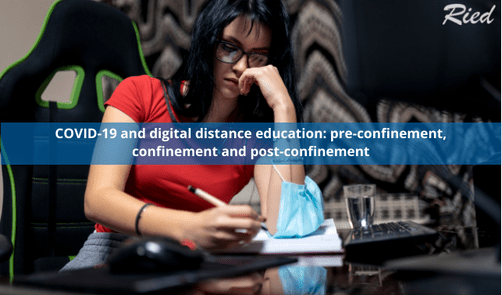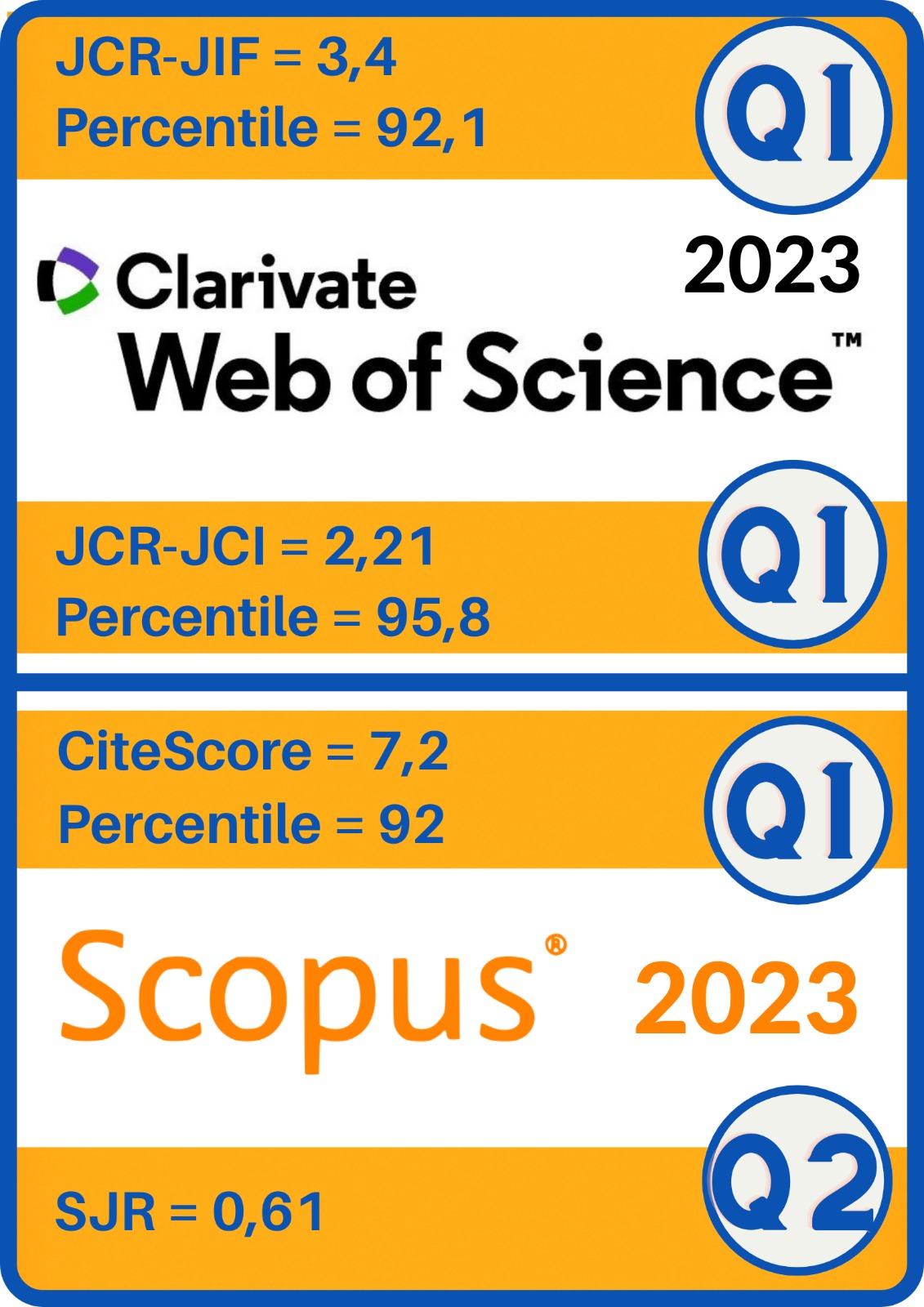COVID-19 y educación a distancia digital: preconfinamiento, confinamiento y posconfinamiento
DOI:
https://doi.org/10.5944/ried.24.1.28080Palavras-chave:
COVID-19, educación a distancia, confinamiento, e-Learning, blended-learning, aprendizaje híbrido, combinado, mixto, flexibleResumo
La pandemia COVID-19 ha venido generando cambios y disrupciones en amplios sectores de la actividad humana. La educación ha sido uno de los más afectados debido a la imposición administrativa del cierre total de los centros educativos en gran parte de los países del mundo. La modalidad de educación a distancia, fundamentalmente en soporte digital, vino a ofrecer soluciones de emergencia a dicha crisis. En este trabajo se lleva a cabo una reflexión sobre las percepciones previas al COVID-19 relativas a esta modalidad educativa. Posteriormente se aportan ideas sobre la forma en que se acometió mayoritariamente la respuesta educativa al confinamiento a través de una educación de emergencia en remoto que se alejaba considerablemente de lo apropiado en diseños y desarrollos de una educación a distancia de calidad. Fueron muchos los errores cometidos y, por tanto, demasiadas las percepciones negativas por parte de muchos estudiantes, familias y docentes, bastantes de estos últimos ya reacios previamente a estos formatos más novedosos. Finalmente se aborda en el artículo la problemática más reciente, relativa a los tiempos de posconfinamiento, en los que no se prevé que en los centros presenciales todos los estudiantes puedan acudir a las aulas físicas en el mismo espacio y tiempo. Se ofrecen sugerencias sobre cómo abordar esta problemática a través de soluciones de hibridación, de una enseñanza y aprendizaje mixtos, combinados o, mejor, integrados y flexibles.
ARTÍCULO COMPLETO:
https://revistas.uned.es/index.php/ried/article/view/28080/22024
Downloads
Referências
Bao, W. (2020). COVID ‐19 y la enseñanza en línea en la educación superior: un estudio de caso de la Universidad de Pekín. Human Behavior and Emerging Technologies, 2(2), 113-115. https://doi.org/10.1002/hbe2.191
Beatty, B. (2007). Transitioning to an Online World: Using HyFlex Courses to Bridge the Gap. In C. Montgomerie y J. Seale (Eds.), Proceedings of ED-MEDIA 2007--World Conference on Educational Multimedia, Hypermedia & Telecommunications (pp. 2701-2706). Vancouver. https://www.learntechlib.org/primary/p/25752/
Beatty, B. J. (2019). Hybrid-Flexible Course Design. Implementing studentdirected hybrid classes. Provo, Utah: EdTech Books.
Dreesen, T., Akseer, S., Brossard, M., Dewan, P., Giraldo, J. P., Kamei, A., Mizunoya, S., y Ortiz, S. (2020). Promising practices for equitable remote learning Emerging lessons from COVID-19 education responses in 127 countries. Innocenti Research Brief. UNICEF. https://cutt.ly/ufffokG
Fox, K., Bryant, G., Lin, N., y Srinivasa, N. (2020). Time for Class – COVID-19 Edition Part 1: A National Survey of Faculty during COVID-19. Tyton Partners and Every Learner Everywhere, July 8, 32 pp. https://www.everylearnereverywhere.org/resources/time-for-class-covid-19-edition/
Hart, J. (2020). Top 200 Tools for Learning 2020, https://www.toptools4learning.com/
Hodges, C., Moore, S., Lockee, B., Trust, T., y Bond, A. (2020). La diferencia entre la enseñanza remota de emergencia y el aprendizaje en línea. Educause Review. https://er.educause.edu/articles/2020/3/the-difference-between-emergency-remote-teaching-and-online-learning
IESALC-UNESCO (2020). El coronavirus-19 y la educación superior: impacto y recomendaciones. https://cutt.ly/xdHJuhK
Jandrić P., Knox J., Besley T., Ryberg T., Suoranta J., y Hayes S. (2018). Postdigital science and education. Educational Philosophy and Theory, 50(10): 893–899. https://doi.org/10.1080/00131857.2018.1454000
Johnson, N., Veletsianos, G., y Seaman, J. (2020). U.S. Faculty and Administrators’ Experiences and Approaches in the Early Weeks of the COVID-19 Pandemic. Online Learning, 24(2). https://doi.org/10.24059/olj.v24i2.2285
Lozano-Díaz, A., Fernández-Prados, J. S., Figueredo Canosa, V., y Martínez Martínez, A. M. (2020). Impactos del confinamiento por el COVID-19 entre universitarios: Satisfacción Vital, Resiliencia y Capital Social Online, International Journal of Sociology of Education, Special Issue: COVID-19 Crisis and Socioeducative Inequalities and Strategies to Overcome them, 79-104. https://doi.org/10.17583/rise.2020.5925
Lozano, J. C., Cooper, E., y Soto, A. (2020). 5 Trends In VR Training Solutions To Elevate Your Blended Learning Program. eLearning Industry. https://cutt.ly/lfrpCqj
Miller, J., Risser, M., Griffiths, R. (2013). Student Choice, Instructor Flexibility: Moving Beyond the Blended Instructional Model. Issues and Trends in Educational Technology, 1(1), 8-24. University of Arizona Libraries. https://www.learntechlib.org/p/129818/
Naffi, N. (2020). Disruption in and by Centres for Teaching and Learning During the COVID-19 Pandemic: Leading the Future of Higher: L’Observatoire Internationale sur les Impacts Sociétaux de l’IA et du Numerique and the Government of Québec, https://cutt.ly/6fQZibh
Odriozola, P., Planchuelo, A., Irurtia, M. J., de Luis, R. (2020). Psychological effects of the COVID-19 outbreak and lockdown among students and workers of a Spanish university. Psychiatry Research, 290. https://doi.org/10.1016/j.psychres.2020.113108
Pedró, F. (2020). COVID-19 y educación superior en América Latina y el Caribe: efectos, impactos y recomendaciones políticas. Análisis Carolina, https://cutt.ly/sfytfUZ. https://doi.org/10.33960/AC_36.2020
Procter, C. T. (2003). Blended learning in practice. Education in a Changing Environment conference, (September 2003) Salford. http://usir.salford.ac.uk/id/eprint/27428/
Research and Markets (2019). Online Education Market & Global Forecast, by End User, Learning Mode (Self-Paced, Instructor Led), Technology, Country, Company. https://cutt.ly/QdHHPcI
Reich, J. (2020). Failure to Disrupt. Why Technology Alone Can’t Transform Education. Harvard University Press.
Singh V., y Thurman A. (2019). How many ways can we define online learning? A systematic literature review of definitions of online learning (1988-2018). American Journal of Distance Education, 33(4), 289–306. https://doi.org/10.1080/08923647.2019.1663082
Stein, J., y Graham, C. R. (2020). Essentials for blended learning: A standards-based guide. Routledge. https://doi.org/10.4324/9781351043991
Tucker, C. (2020). The Concurrent Classroom: Using Blended Learning Models to Teach Students In-person and Online Simultaneously. @Catlin Tucker. https://catlintucker.com/2020/09/concurrent-classroom-blended-learning-models/
u-Multirank (2020). About 60% of universities reported online learning provisions in their strategic planning pre-COVID-19, but only few appeared to be prepared for a quick shift to full online programmes. https://cutt.ly/VfGDArk
UN (2020a). Policy Brief: Education during COVID-19 and beyond (August 2020). United Nations. https://cutt.ly/bdHJEhX
UN (2020b). Policy Brief: The World of Work and COVID-19 (June, 2020). United Nations. https://cutt.ly/6fpDKHF
UNESCO (2020). Startling digital divides in distance learning emerge. https://cutt.ly/adH2SRS.
Wiederhold, B.K. (2020). Connecting Through Technology During the Coronavirus Disease 2019 Pandemic: Avoiding ‘‘Zoom Fatigue’’. Cyberpsychology, Behavior, and Social Networking, 23(7). https://doi.org/10.1089/cyber.2020.29188.bkw
World Bank (2020). How countries are using edtech (including online learning, radio, television, texting) to support access to remote learning during the COVID-19 pandemic. World Bank. https://cutt.ly/ZfuND7b.
World Economic Forum, (2020). 3 ways the coronavirus pandemic could reshape education. https://url2.cl/N3klw.
Zhu, X., y Liu, J. (2020). Education in and After Covid-19: Immediate Responses and Long-Term Visions. Postdigital Science and Education, 1-5. https://doi.org/10.1007/s42438-020-00126-3

Downloads
Publicado
Como Citar
Edição
Secção
Licença
Direitos de Autor (c) 2020 RIED. Revista Iberoamericana de Educación a Distancia

Este trabalho encontra-se publicado com a Licença Internacional Creative Commons Atribuição 4.0.
As obras que são publicadas neste revista estão sujeitas ao seguintes termos:
1. Os autores cedem de forma não exclusiva os direitos de exploração dos trabalhos aceitos para sua publicação a "RIED. Revista Iberoamericana de Educação a Distância", garantem à revista o direito de ser a primeira publicação do trabalho e permitem que a revista distribua os trabalhos publicados sob a licença de indicada no ponto 2.
2. As obras são publicadas na edição eletrônica da revista sob uma licença Creative Commons Atribuição 4.0 Internacional (CC BY 4.0). Podem copiar e redistribuir o material em qualquer suporte ou formato, adaptar, remixar, transformar, e criar a partir do material para qualquer fim, mesmo que comercial. Você deve atribuir o devido crédito, fornecer um link para a licença, e indicar se foram feitas alterações. Você pode fazê-lo de qualquer forma razoável, mas não de uma forma que sugira que o licenciante o apoia ou aprova o seu uso.
3. Condições de auto-arquivo. Permite-se e incentava-se aos autores difundir eletronicamente a versõ OnlineFirst (versão avaliada e aceita para publicação) de su obra antes de sua publicação, sempre com referência a sua publicação na RIED, já que favorece sua circulação e difusão mais cedo e com isso um possível aumento em sua citação e alcance entre a comunidade acadêmica. Color RoMEO: verde.







